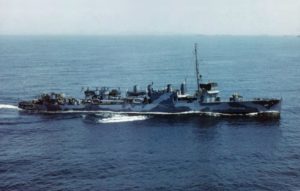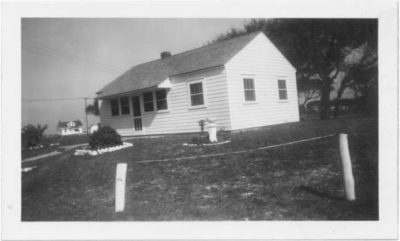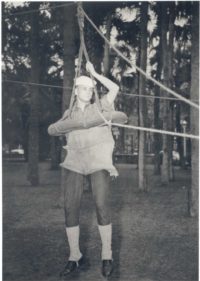The reality of war on America’s own East Coast was a shock to its residents, and it was no different for the people of St. Augustine. The United States Navy kept the news of the U-boat attacks under wraps while they scrambled to take defensive action, and action they did take. In February of 1942, the USS Roper (DD-147), a Wickes-class destroyer returned to Norfolk, VA, after successfully performing escort duty to Londonderry, Ireland. Shortly after midnight on April 14, 1942, she encountered, engaged, and sank German submarine U-85 off the coast of North Carolina. It was the first Nazi U-boat sunk in American waters. Lieutenant Commander Hamilton Howe received the Navy Cross for the successful engagement. This good news was very well received here at home and let the German Navy know that their “Happy Time” was not to last forever.

The old United States Lighthouse Service, initially founded in 1789, had formerly merged with the United States Coast Guard in July of 1939, but at the outbreak of hostilities with Germany in 1941, Lighthouse Keepers were given the option of putting on the Coast Guard uniform or retiring. St. Augustine Light Station Head Keeper Cardell D. Daniels proudly accepted a position in the Coast Guard as the station transitioned into an active, wartime coastal watch station. Residents of the city would learn that St. Augustine was to receive a U.S. Coast Guard training station. In the following months, hundreds of American men and women would report to St. Augustine for basic training. A headquarters for the Coast Guard was set up on the grounds of Henry Flagler’s famous Ponce de Leon Hotel (now Flagler College) where recruits were processed, probed, prodded and prepared to begin the long days of acclimation for a life in sand and sea.

All along America’s East Coast, coastal lighthouses became observation platforms for Coast Guard spotters documenting all shipping and watching for Nazi U-boat activity. Other personnel would begin a beach patrol on foot with K-9 units, on horseback, or in Jeeps. Construction began at the St. Augustine Light Station of a new Coastal Watch Building (barracks) to house four Guardsmen to perform these duties. A wireless radio was installed at the top of the lighthouse for constant communication with other lighthouses on the coast, as well as Port Command in downtown St. Augustine. It functioned in tandem with the Navy Radio Wireless Station that sat northeast of the tower. Today this Wireless Station is still standing and is a private residence. The old 1936 Keepers’ garage at the station was converted into a beach patrol jeep maintenance garage. The U.S.C.G. Barracks building was completed in July 1942 and still sits just north of the 1876 Keepers’ Quarters at the light station, with the garage still standing just across the main access road on the north side of the tower.
While the beach patrols got underway, training continued on the grounds of the U.S.C.G. Training Center. A mock-up of a ship was built on the lawn and christened the USS Neversail. A “breeches buoy” was rigged to train sailors how to transfer between two vessels underway, as well as perform sea rescues. It was simply a suspended life ring with a pair of pants sewn in.
What we now know as the area around the Conch House, north of the lighthouse, was used to train recruits in the use of anti-aircraft and shore batteries.
Everything was first learned on firm ground before transferring to the sea, but the long days spent in the heat and humidity of Northeast Florida prepared these brave, raw recruits for what was to come. The sand and sweat of coastal Florida would shape them into a disciplined force for America’s first line of homeland defense as well as future service overseas.










